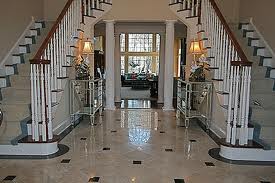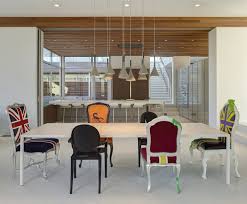Flooring is one of the biggest decisions a homeowner makes. Some love the softness of carpet. Some love the look of wood. It is a big decision and one to be thought out properly.
Some people adore hardwood’s natural beauty. It’s easy to clean and can look new for decades if cared for properly.
The floors you choose really create the atmosphere in your home and gives it an identity.
When it comes down to it, always consider your lifestyle. Do you have children? Do you have pets? Is your lifestyle crazy and hectic? Understanding all of the options before making your decision is paramount. Budget is also a factor.
I hope the following will help you make the right choice for your home. I am always available and only a phone call away (905 808 2460) to give you any advice or recommendations.
What type of room are you considering flooring for?
What is your taste?
What will look good in your home and suit your decor?
From traditional elegant classics to relaxed casual country to modern contemporary.
Every category of flooring today offers an incredible range of styles, colours, textures and patterns. Underlay is equally as important. It control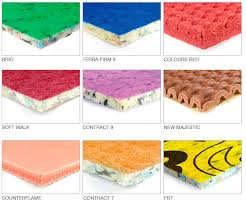 s im
s im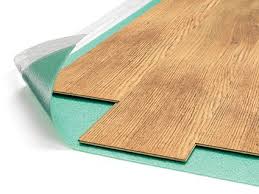 perfections in the sub-floor, it also helps deaden sound when walking on the floor (since it is not attached to the sub-floor), and softens the feel when walking on the floor. Underlay for laminate and floating wood floors are different than the underlay for carpet. A thicker padding is used for carpet. It amazes me when I step onto a carpeted area how noticeable the underlay is. The carpet may look incredible but when poor grade underlay is used is can cause an area to feel hard and uninviting. Please consider a great grade underlay with any new flooring. It really does make all the difference.
perfections in the sub-floor, it also helps deaden sound when walking on the floor (since it is not attached to the sub-floor), and softens the feel when walking on the floor. Underlay for laminate and floating wood floors are different than the underlay for carpet. A thicker padding is used for carpet. It amazes me when I step onto a carpeted area how noticeable the underlay is. The carpet may look incredible but when poor grade underlay is used is can cause an area to feel hard and uninviting. Please consider a great grade underlay with any new flooring. It really does make all the difference.
If you live in a multi-story building, house, apartment or condo. Good flooring is very important. The more muffled the sound, the better. Sound is transmi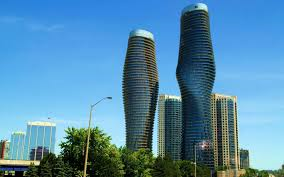 tted when hard objects, like hard-soled shoes, furniture, dropped objects, or even dog claws
tted when hard objects, like hard-soled shoes, furniture, dropped objects, or even dog claws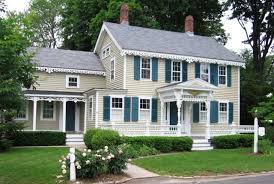 impact a hard surface, like tile or stone. Without anything to absorb it, sound waves can spread.
impact a hard surface, like tile or stone. Without anything to absorb it, sound waves can spread.
So many flooring options are low maintenance, easy to clean and durable. Some examples of these are laminate, ceramic, vinyl or carpet. Areas like Entryways, kitchens, bathrooms and hallways have a lot of traffic that passes through. Ceramic is often a great option for these areas.
For areas like bathrooms or kitchens where water spills may happen, the best solutions are ceramic or porcelain tile. Popular kitchen choices today also include hardwood, laminate, ceramic and cork. For areas of the home where cozy warmth and good acoustics are important, like family rooms, bedrooms and home theatres, carpet is still the best solution.
Depending on your space and taste, consider the vast array of rich colours of Laminate and Hardwood and accessorising with the addition of an area rug.
Hardwood
Solid hardwood is milled from solid lumber and works well in almost any room, not recommended in locations like bathrooms or basements due to the potential for damage from ground moisture.
This type of flooring c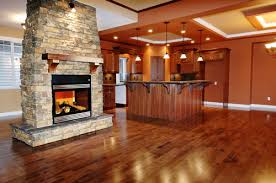 an be sanded and refinished numerous times to maintain its natural beauty. Woo
an be sanded and refinished numerous times to maintain its natural beauty. Woo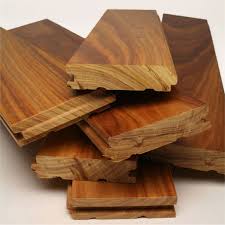 d floors can last more than 25 years and their beauty often increases with age. If you’re looking for easy-to-maintain flooring that adds charm to your home. Hardwood flooring is a great way to enhance a space and also adds value to your home. Solid hardwood does shrink and expand depending on the humidity in your home. In the winter when it’s drier, hardwood floors will shrink. When there’s more moisture in the air, like in the spring or summer, hardwood expands. Hardwood has many different styles and colours that will satisfy all of your flooring needs.
d floors can last more than 25 years and their beauty often increases with age. If you’re looking for easy-to-maintain flooring that adds charm to your home. Hardwood flooring is a great way to enhance a space and also adds value to your home. Solid hardwood does shrink and expand depending on the humidity in your home. In the winter when it’s drier, hardwood floors will shrink. When there’s more moisture in the air, like in the spring or summer, hardwood expands. Hardwood has many different styles and colours that will satisfy all of your flooring needs.
Cork
In England, I grew up with cork floors. They were warm, great for soundproofing and felt spongy underfoot. Cork flooring comes in a wide variety of styles offering a range of design possibilities. The majority of cork used for flooring, actually comes from the bark of the cork oak tree, Cork is a design option that offers high-end durab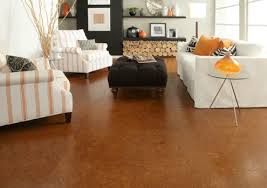 ility. Cork a great option for comfort and sturdiness. The versatile material allows so many choices from different stains in many shades and it can also be painted. It can be matched with any decor you choose. If you are looking for an environmentally friendly option, cork is the perfect choice.
ility. Cork a great option for comfort and sturdiness. The versatile material allows so many choices from different stains in many shades and it can also be painted. It can be matched with any decor you choose. If you are looking for an environmentally friendly option, cork is the perfect choice.
Cork floors do not absorb dust and are resistant to bacteria and fungus. They do not cause allergies nor pose a risk to asthma sufferers. Cork repels insects, resists rotting, and also fire.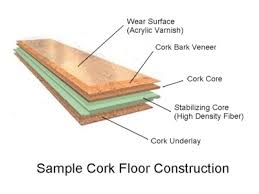
This type of flooring is most commonly used in kitchens, but can also be used for other types of spaces. Cork is comfortable, quiet and comes in a multitude of colours.
Cork must be initially sealed with polyurethane and re-sealed every few years in order to protect the integrity of the material by keeping dirt and moisture at bay. Since cork has a thin outer layer, moisture and excessive dirt can damage the flooring. Heavy pieces of furniture if dragged along a cork floor can tear it. It can also cause punctures or divots. Use coasters to prevent this.
Vinyl
Vinyl flooring is durable, stable and generally moisture-resistant. It is easy to care for with a broom and damp mop and has spe cial backing to prevent mildew growth and wat
cial backing to prevent mildew growth and wat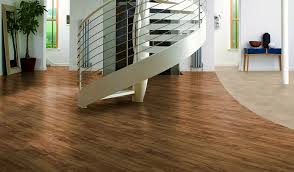 er damage. It lasts for a relatively long time – at least five years – and resists UV fading, stains and dents. Vinyl is also soft and quiet underfoot, easy to repair and affordable. To match any decor imaginable, it comes in a wide variety of colors and patterns, some even look like wood or stone.
er damage. It lasts for a relatively long time – at least five years – and resists UV fading, stains and dents. Vinyl is also soft and quiet underfoot, easy to repair and affordable. To match any decor imaginable, it comes in a wide variety of colors and patterns, some even look like wood or stone.
Despite its many benefits, vinyl also has a downside. It is resistant to the most damage, and seems to cut and scratch fairly easily. It can also show fairly extensive wear after a few years in high-traffic areas, making it less long-term than many other flooring types. Additionally, sheet vinyl requires professional installation, increasing the cost factor. For many people, vinyl looring is also considered less visually pleasing than more expensive options.
Laminate
Laminate flooring is made by compressing layers of fiberboard together and placing a photographic image of wood grain, stone, or tile pattern over the fiberboard. After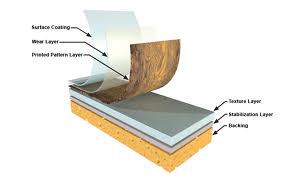 the image is added to the surface, a protective coating is added to help
the image is added to the surface, a protective coating is added to help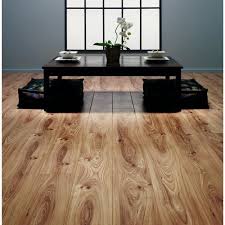 prevent damage and add a finish to the flooring. The picture attached shows how each layer is made up.
prevent damage and add a finish to the flooring. The picture attached shows how each layer is made up.
Laminate floors have high resistance to moisture and are often used for kitchens, bathrooms, and basements. Laminate is cheaper than hardwood and can be installed very easily.
It is particularly suitable for use over concrete floors. Always use underlay under your laminate floor for soundproofing. Some laminates have underlay built into the bottom layer, if not, look for a good one.
Engineered Hardwood
Engineered hardwood flooring combines a thin-but-tough real hardwood surface with underlying multiple layers of plywood or fireboard. Its laminated layers 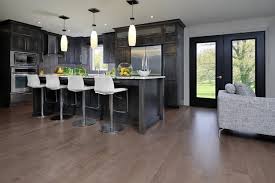 make it remarkably strong and more resistant to moisture. As a result, it can be used in below, on, or above grade locations, basements. Engineered hardwood performs just like solid hardwood when it
make it remarkably strong and more resistant to moisture. As a result, it can be used in below, on, or above grade locations, basements. Engineered hardwood performs just like solid hardwood when it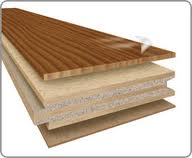 comes to scratching and denting. Laminate flooring has an extremely tough wear layer of melamine finish which gives it added durability with regards to denting and scratching. Its extra tough durability is ideal for families with active lifestyles including those families with children and pets. Engineered hardwood floors can be sanded and refinished for a longer life span. Engineered hardwood is expensive to manufacture due to its complexity of integrated layers of hardwood and plywood. Laminate flooring is more economical to produce and therefore less expensive to purchase.
comes to scratching and denting. Laminate flooring has an extremely tough wear layer of melamine finish which gives it added durability with regards to denting and scratching. Its extra tough durability is ideal for families with active lifestyles including those families with children and pets. Engineered hardwood floors can be sanded and refinished for a longer life span. Engineered hardwood is expensive to manufacture due to its complexity of integrated layers of hardwood and plywood. Laminate flooring is more economical to produce and therefore less expensive to purchase.
Carpet
What makes carpet a good choice for floor covering if you have pets?
Wall-to-wall carp eting is more comfortable for pets; after all, many pets spend lots of time lying around on the floor. Carpe
eting is more comfortable for pets; after all, many pets spend lots of time lying around on the floor. Carpe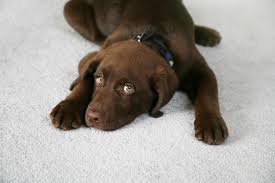 t is also a nonslip surface that can be safer for animals, whose footpads tend to slide on tile and hardwood. Carpet will maintain its beauty and durability for many years. Carpet is a safe option. Ideal for the elderly and very young. Carpet also absorbs noise rather than reflecting it back into the room. Those who want to save money carpet does retain warmth longer, conserving energy and reducing heating bills.
t is also a nonslip surface that can be safer for animals, whose footpads tend to slide on tile and hardwood. Carpet will maintain its beauty and durability for many years. Carpet is a safe option. Ideal for the elderly and very young. Carpet also absorbs noise rather than reflecting it back into the room. Those who want to save money carpet does retain warmth longer, conserving energy and reducing heating bills.
Bamboo
Bamboo flooring is one of the best  ways to get a combination of beauty and durab
ways to get a combination of beauty and durab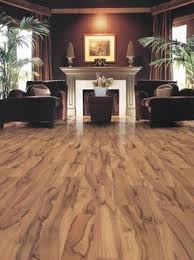 ility. It is most known for its strength and stability, making it a great choice for flooring that lasts for many years. Although bamboo is actually a type of grass, it can be harder than oak, giving you a long lasting material. I personally have this in my home and absolutely love it. Maintenance free. It has a lot of the same benefits of hardwood plus a few more. It has less risk of damage due to expansion or contraction. It is also particularly resistant to insects and mildew growth. Bamboo is one the most recent materials to be used in flooring, but it is also one of the most environmentally friendly. It has a wide variety of styles and colours.
ility. It is most known for its strength and stability, making it a great choice for flooring that lasts for many years. Although bamboo is actually a type of grass, it can be harder than oak, giving you a long lasting material. I personally have this in my home and absolutely love it. Maintenance free. It has a lot of the same benefits of hardwood plus a few more. It has less risk of damage due to expansion or contraction. It is also particularly resistant to insects and mildew growth. Bamboo is one the most recent materials to be used in flooring, but it is also one of the most environmentally friendly. It has a wide variety of styles and colours.
Ceramic and Porcelain tile
Ceramic and porcelain tile flooring are known for their beauty and function. Ceramic and porcelain can with stand quite a bit of punishment. They are also highly moisture r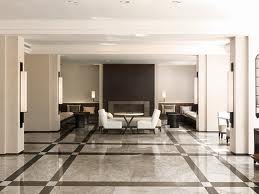 esistant, being safe for damp areas such as basements, or bathrooms. Like hardwood floors, they can also add value to your home. Buyers appreciate the beauty, durability and easy maintenance of tile.
esistant, being safe for damp areas such as basements, or bathrooms. Like hardwood floors, they can also add value to your home. Buyers appreciate the beauty, durability and easy maintenance of tile.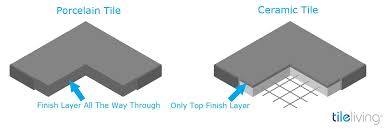
This type of flooring possesses the following characteristics: stain resistant, scratch resistant, fire resistant, will not fade from sun light, slip resistant and easy to clean. Very practical in a wide range of colour and design options. Being very versatile enables great creativity that will give your home the beauty you desire.
I hope this information has been helpful to you.
